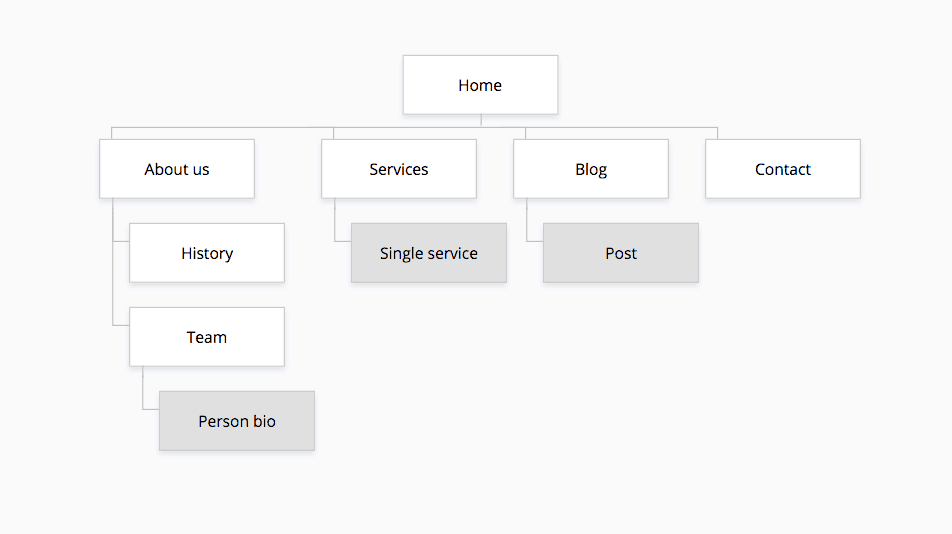Drafting a well-detailed Guide for website specifications ensures that your web project comes to fruition. It also helps developers to provide more precise quotations. Are you in need of writing a thorough specification for your site but don’t know where to start? Well, we’ve got you covered. The guide below will provide you with all the desired assistance to make your project successful.
If you want to plan a successful web project without running into costly challenges in the process, then you need a focused, detailed web specification. In fact, writing such content keeps the project running flawlessly as well as helping you to develop a web project that fulfills the objectives of both your enterprise and its visitors.
As far as this detailed guide is concerned, I will break down all the important components of a reliable web specification and their importance. Also, the guide will focus on the valuable lessons we’ve learned so far while operating a WordPress-based entity. It also touches on the meaning of web specification, the process of writing one, and its content.
Web Specification
In essence, it describes a document that outlines the techniques and goals of a web project. It must highlight various constraints, including technological challenges, budget, or timeframe. Additionally, a specification can also outline other project details like the team.
Web Specification Content
What Should Include Guide for Website Specifications?
This document varies depending on a given web project. Nevertheless, expect to find some similar parts of a specification in most website projects.
The list below comprises of the common sections. That said, you can decide which sections to mention when writing your specification or add those that are not on the list.
All the vital aspects of the project must be featured in your specification document.

Guide for Website Specification
- Overview
- Team Involved
- Objectives
- Content
- Design
- Functionality
- Convenience
- Browser support
- Web hosting
- Constant maintenance & support
- Assumptions Made
- Milestones
- Deadlines
- Set Budget
Overview
It provides a general summary of the web project as well as the entity executing it. In this case, an overview can be:
- About your entity
- The problem you’re trying to fix
- Target audience
Team Involved
This section lists all the key decision-makers behind the project. Make sure you include their emails and project titles. Make sure that you include the project head here.
Objectives
This part of the document briefly describes the goals of the particular project. Such information gives developers a clue of all the things you intend to accomplish, which, in turn, helps in recommending the most suitable solutions.
An example of the objectives you may have in mind:
- Reach 1k new followers on Twitter in one year
Goals ought to be SMART, which means:
- Specific
- Measurable
- Assignable
- Realistic
- Time-related
Project Phases
In case the project forms a larger project, or if there’ll be other phases after the current project is completed, then you have to list it all down. Doing so will help show how and where the current project fits in your future undertakings.
For instance:
Phase 1: Marketing Website – present project
Phase 2: include Ecommerce
Phase 3: Customer Relationship Management (CRM) integration
Content Structure
Also referred to as Information Architecture, the content structure features various sections and is determined by the size and complexity of your web content.
Site Map
This section typically comes in the form of a diagram showing the type of “tree” (a web pages’ hierarchical structure). A site map can also feature a “page template” as shown below.
You can find helpful tools for developing website site maps out there. For our case, we stick to Gloomaps.

Content Types
A website can feature different content types. At the basic level, expect to find both webpages and posts. A post is basically sequential, like news, whereas a page is timeless, for example, About Us.
Other typical types of content include:
- Testimonials
- Products
- People
For each type, the related data must be listed. Therefore, “Person” content may require the data outlined below:
- First name
- Surname
- Position
- Bio
- Email address
- Telephone number
Taxonomies
Essentially, a taxonomy refers to a classification scheme for your web content. You can come up with taxonomies for the entire website, which will be utilized across various content types. In the case of a blog, expect to find two main taxonomies, including ‘Tags’ & ‘Categories’.
The two primary types of taxonomy include:
- Hierarchical taxonomy – for instance, “Categories”
- Non-hierarchical – for example, “Tags”
Webpage Templates
A template encompasses a given information layout. Examples of basic webpage templates are as listed below:
- Home
- Our team
- Blog post
- Contact information – might include a form and map
- News archive
In case you have mockups for such webpage templates, kindly include them in this section.
Design
For this part, the content will be determined by whether developing a design is outlined in the scope of work, or whether a design is already in existence.
Already Existing Design
If the design exists, then you can reference it in this section. You can avail your design assets in the following ways:
- Sketch files
- Flat image files
- PDFs (can be annotated)
- PSD files
Make sure you present annotations or a guide for the following details:
- Spacing
- Animations
- Hover states
- Colors
- Grid systems
- Typography rules
Responsive designs
Nowadays, people can view various sites on a broad array of screens and gadgets. Hence, it’s vital to factor in the appearance of your website, primarily on tiny screen devices like smartphones.
Design as a section of your Project Scope
You have to provide the preferred stylistic path and guidance on the ways of overcoming the challenges involved, if visual design is a vital aspect of your project.
Although each designer has their own procedure, it ‘s imperative to provide the following:
- Print material – such as brochures
- Brand guidelines – like logos, fonts, colors, and other graphic
- Evaluating the competition
Functionality
It entails how your website functions. Most websites have to be integrated with APIs from third-parties. For such cases, all the integrations have to be highlighted in this part based on how they’ll operate and any other details required.
Depending on your respective web project, you may consider highlighting various functionality examples, including:
- Tracking and analytics
- Multi-lingual functionalities
- Secure Sockets Layer (SSL)
- E-commerce capabilities
Convenience
This means creating sites that work for everybody, irrespective of ability, technology, or location. WCAG are standards created to help website developers in coming up with more accessible sites. If you have specific requirements, do not hesitate to list them here.
Device & Browser Support
Today websites can be navigated on various gadgets and web browsers. For this reason, you must find out which browser or device needs support due to the varying technological needs.
This part has to outline the specific gadgets and web browsers, which your site ought to undergo testing on. In case you have data from such aspects, particularly drawn from the analytics of a current website, it might be helpful to mention it here.
Hosting
Here, include all the website’s hosting requirement details. If you’ve already identified a hosting service provider, provide information regarding that platform in this part of the website specification document.
Constant Maintenance & Support.
Websites have to be enhanced, preserved, and upgraded regularly. In case you are utilizing a WordPress site, the code base will rapidly worsen if it’s not updated constantly. In turn, this can cause security, performance, and compatibility problems.
Assumptions
Making assumptions regarding the parties in charge of certain operations is a common problem. For instance, who will add the desired content? To avoid such a case, ensure that your guide for website specification outlines all that you require to make the site complete.
Milestones
Most projects, particularly those that leverage a fixed cost technique, have specific milestones from the word go. These are clearly set phases whereby you’ll be dealing with various website aspects. Examples of typical website project milestones include:
- Go Live
- Feedback
- Wireframes
- Development
- Designs
Deadlines
Even though you do not have specific milestones, having a clue of the timeframe involved, primarily if there’s a set deadline, is important. Outline all the set deadlines in your website specification document.
Budget
Your financial plan ought to be mentioned in this particular section of the document. You can also break them down the details according to the milestones involved in the project. Furthermore, mention any information regarding the desired pricing model.
Download Website Specification template
DownloadTo Wrap it Up!
A comprehensive website specification differentiates between a successful and unsuccessful website project. It aids in conveying your enterprise’s requirements and objectives to the various internal and outsourced teams involved. A successful start will help you prevent costly hurdles down the road.
